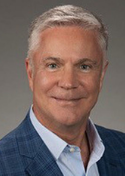
By Bill Dickinson
Senior Consultant
This article was originally featured in the
Atlanta Business Chronicle.

First Impressions. They go a long way. In that initial meeting with another, we intuitively ask ourselves “can I trust this person?” And, “can I respect this person?” This is the researched premise of Dr. Amy Cuddy in her 2015 book,
Presence: Bringing Your Boldest Self to Your Biggest Challenges
I recently passed on a potential business engagement because I couldn’t quite answer yes to either of the questions above. I was intuiting or sensing a disconnect. Bottom line, I wasn’t feeling safe or certain that there would be ongoing mutual respect for one another. For me, this means a degree of shared emotional intelligence, an openness to new ideas, a reasonable amount of autonomy, and a commitment to collaboration. So, I declined an opportunity.
It’s no secret that we have had an extraordinarily challenging year. How we do business, as a result of COVID-19, has clearly changed across industries. How we feel in the midst of business has also been elevated. Historically we have led with competency, and yet reality demands we lead with trust. Dr. Cuddy would say it this way, “from an evolutionary perspective it is more important to our survival to know whether a person deserves our trust” versus a particular competency. Is competence importance? Absolutely. But, given our global experience of 2020, competence follows and is a complement to trust. As Dr. Cuddy would suggest, we “connect, then lead”.
Just look back at the last year – the blurred lines of work-life balance, staying healthy, and working remotely have caused a great deal of stress. This stress and uncertainty have caused more of us to emote. And as human beings, we feel. In this surreal experience of work, we have needed leaders who understand and practice both empathy as well as vulnerability. When managing work responsibilities within our family homes, expectations and boundaries merge as well as conflict.
As we know, company culture and engagement are highly influenced by its most senior leaders. What senior leaders say and do makes a huge difference towards whether we feel safe enough—physically and emotionally—to perform with some sense of agency and flexibility. And, behind all of these people-leader practices is trust. Trust expressed in such a way that demonstrates reliability, approachability, and credibility. So, trust is more than being true to our word; it is the anchor to relationships that, at the end of the day, produce company results.
Seven suggestions for one’s ability to model and advocate for trust:
1. Understand that at senior levels of leadership, the leader is always being watched and evaluated for integrity and trustworthiness. First and lasting impressions matter.
2. If in doubt about your perceived trustworthiness engage in a 360-feedback process.
3. Embrace those qualities of character that you most admire in other trusted leaders.
4. Self-disclose your own uncertainty as well as optimism. You, too, have experienced stress but are committed to resilience.
5. Over communicate uncertainty, pivots, and new expectations—and why. Remind everyone of the company’s larger purpose and their contribution to this purpose.
6. Respect the competency of others, but understand it is the quality of our relationships that leads to extraordinary results.
7. In word and deed, let your leadership behavior convey, “I’ve got your back”.
bdickison@turknett.com
Bill Dickinson’s Bio
770-270-1723

 First Impressions. They go a long way. In that initial meeting with another, we intuitively ask ourselves “can I trust this person?” And, “can I respect this person?” This is the researched premise of Dr. Amy Cuddy in her 2015 book, Presence: Bringing Your Boldest Self to Your Biggest Challenges
I recently passed on a potential business engagement because I couldn’t quite answer yes to either of the questions above. I was intuiting or sensing a disconnect. Bottom line, I wasn’t feeling safe or certain that there would be ongoing mutual respect for one another. For me, this means a degree of shared emotional intelligence, an openness to new ideas, a reasonable amount of autonomy, and a commitment to collaboration. So, I declined an opportunity.
It’s no secret that we have had an extraordinarily challenging year. How we do business, as a result of COVID-19, has clearly changed across industries. How we feel in the midst of business has also been elevated. Historically we have led with competency, and yet reality demands we lead with trust. Dr. Cuddy would say it this way, “from an evolutionary perspective it is more important to our survival to know whether a person deserves our trust” versus a particular competency. Is competence importance? Absolutely. But, given our global experience of 2020, competence follows and is a complement to trust. As Dr. Cuddy would suggest, we “connect, then lead”.
Just look back at the last year – the blurred lines of work-life balance, staying healthy, and working remotely have caused a great deal of stress. This stress and uncertainty have caused more of us to emote. And as human beings, we feel. In this surreal experience of work, we have needed leaders who understand and practice both empathy as well as vulnerability. When managing work responsibilities within our family homes, expectations and boundaries merge as well as conflict.
As we know, company culture and engagement are highly influenced by its most senior leaders. What senior leaders say and do makes a huge difference towards whether we feel safe enough—physically and emotionally—to perform with some sense of agency and flexibility. And, behind all of these people-leader practices is trust. Trust expressed in such a way that demonstrates reliability, approachability, and credibility. So, trust is more than being true to our word; it is the anchor to relationships that, at the end of the day, produce company results.
Seven suggestions for one’s ability to model and advocate for trust:
1. Understand that at senior levels of leadership, the leader is always being watched and evaluated for integrity and trustworthiness. First and lasting impressions matter.
2. If in doubt about your perceived trustworthiness engage in a 360-feedback process.
3. Embrace those qualities of character that you most admire in other trusted leaders.
4. Self-disclose your own uncertainty as well as optimism. You, too, have experienced stress but are committed to resilience.
5. Over communicate uncertainty, pivots, and new expectations—and why. Remind everyone of the company’s larger purpose and their contribution to this purpose.
6. Respect the competency of others, but understand it is the quality of our relationships that leads to extraordinary results.
7. In word and deed, let your leadership behavior convey, “I’ve got your back”.
bdickison@turknett.com
Bill Dickinson’s Bio
770-270-1723
First Impressions. They go a long way. In that initial meeting with another, we intuitively ask ourselves “can I trust this person?” And, “can I respect this person?” This is the researched premise of Dr. Amy Cuddy in her 2015 book, Presence: Bringing Your Boldest Self to Your Biggest Challenges
I recently passed on a potential business engagement because I couldn’t quite answer yes to either of the questions above. I was intuiting or sensing a disconnect. Bottom line, I wasn’t feeling safe or certain that there would be ongoing mutual respect for one another. For me, this means a degree of shared emotional intelligence, an openness to new ideas, a reasonable amount of autonomy, and a commitment to collaboration. So, I declined an opportunity.
It’s no secret that we have had an extraordinarily challenging year. How we do business, as a result of COVID-19, has clearly changed across industries. How we feel in the midst of business has also been elevated. Historically we have led with competency, and yet reality demands we lead with trust. Dr. Cuddy would say it this way, “from an evolutionary perspective it is more important to our survival to know whether a person deserves our trust” versus a particular competency. Is competence importance? Absolutely. But, given our global experience of 2020, competence follows and is a complement to trust. As Dr. Cuddy would suggest, we “connect, then lead”.
Just look back at the last year – the blurred lines of work-life balance, staying healthy, and working remotely have caused a great deal of stress. This stress and uncertainty have caused more of us to emote. And as human beings, we feel. In this surreal experience of work, we have needed leaders who understand and practice both empathy as well as vulnerability. When managing work responsibilities within our family homes, expectations and boundaries merge as well as conflict.
As we know, company culture and engagement are highly influenced by its most senior leaders. What senior leaders say and do makes a huge difference towards whether we feel safe enough—physically and emotionally—to perform with some sense of agency and flexibility. And, behind all of these people-leader practices is trust. Trust expressed in such a way that demonstrates reliability, approachability, and credibility. So, trust is more than being true to our word; it is the anchor to relationships that, at the end of the day, produce company results.
Seven suggestions for one’s ability to model and advocate for trust:
1. Understand that at senior levels of leadership, the leader is always being watched and evaluated for integrity and trustworthiness. First and lasting impressions matter.
2. If in doubt about your perceived trustworthiness engage in a 360-feedback process.
3. Embrace those qualities of character that you most admire in other trusted leaders.
4. Self-disclose your own uncertainty as well as optimism. You, too, have experienced stress but are committed to resilience.
5. Over communicate uncertainty, pivots, and new expectations—and why. Remind everyone of the company’s larger purpose and their contribution to this purpose.
6. Respect the competency of others, but understand it is the quality of our relationships that leads to extraordinary results.
7. In word and deed, let your leadership behavior convey, “I’ve got your back”.
bdickison@turknett.com
Bill Dickinson’s Bio
770-270-1723 
